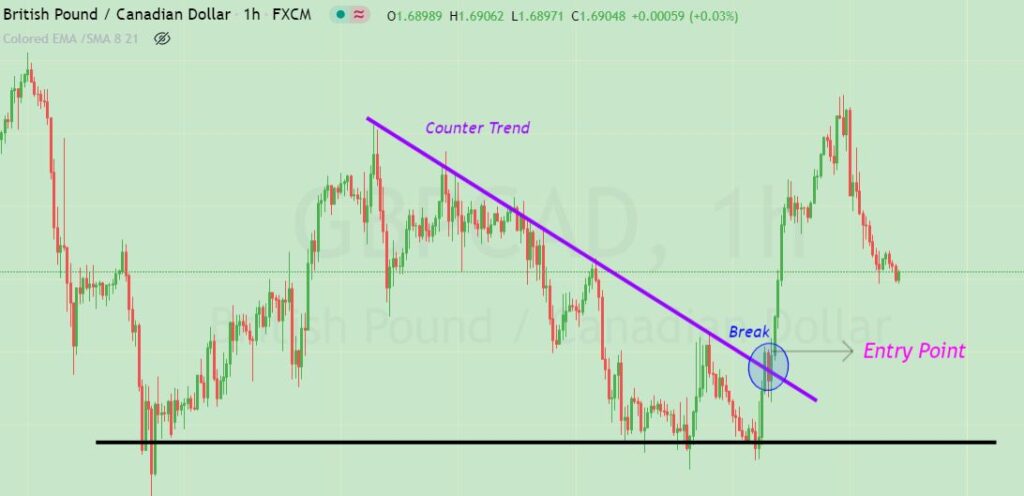Introduction
Timing your entry in forex trading is crucial for successful trading. It can make the difference between a profitable trade and a losing one. Understanding the factors that influence market movements and implementing effective entry timing strategies can significantly increase your chances of success in forex trading.

Image: honeypips.com
This article will provide a comprehensive guide to timing your entry in forex trading. We will cover essential market concepts, technical indicators, and specific entry timing strategies to help you make informed trading decisions.
Factors Influencing Market Movements
Before discussing entry timing strategies, it’s essential to understand the factors that drive market movements. These factors include:
- Economic Data: News releases on economic indicators, such as GDP, unemployment, and inflation, can significantly impact currency values.
- Political Events: Elections, government policies, and geopolitical tensions can also influence market sentiment and lead to price fluctuations.
- Technical Factors: Technical analysis studies price patterns and market trends to identify potential trading opportunities.
- Supply and Demand: As with any market, currency prices are influenced by supply (currencies being sold) and demand (currencies being bought).
- Market Psychology: The beliefs and emotions of traders can influence market movements. For example, excessive optimism can lead to market bubbles, while excessive pessimism can cause market crashes.
Technical Indicators for Entry Timing
Technical indicators are tools designed to analyze price patterns and market momentum. Traders use them to identify potential trading opportunities and time their entries accordingly.
Some commonly used technical indicators for entry timing include:
- Moving Averages: Moving averages smooth out price data by plotting the average price over a specific period. Traders use them to identify trends and potential support and resistance areas.
- Trend Lines: Trend lines are lines drawn connecting price peaks or troughs, which indicate the general trend of the market. Traders use them to identify potential entry points and exit points.
- Fibonacci Levels: Fibonacci levels are based on a mathematical sequence that identifies potential support and resistance levels in the market.
- Relative Strength Index (RSI): The RSI measures the strength of market momentum and can indicate when the market is overbought or oversold, which helps traders determine entry points.
- MACD: The Moving Average Convergence Divergence (MACD) is a trend-following indicator that helps traders identify changes in market momentum and potential reversals.
Specific Entry Timing Strategies
Based on the factors influencing market movements and technical indicators, traders employ various entry timing strategies. Here are some examples:
- Trend Following: Trend following strategies involve entering trades in the direction of the prevailing trend, based on the assumption that trends tend to continue. Traders may use moving averages, trend lines, or other indicators to determine the trend.
- Counter-Trend Trading: Counter-trend trading involves entering trades against the current trend, usually during corrections or pullbacks. Traders use technical indicators to identify potential pullbacks and enter trades when the price reaches a support or resistance level.
- Range Trading: Range trading strategies involve trading within a defined range, capitalizing on price fluctuations within a specific price band. Traders use support and resistance levels to identify potential trading opportunities.
- Scalping: Scalping involves taking small, quick profits over short time frames, based on very small price movements. Scalpers use technical indicators, such as RSI or MACD, to identify potential market fluctuations.
- Breakout Trading: Breakout trading involves entering trades when the price breaks above (or below) a particular level, such as a support or resistance area. Traders use breakout strategies to capture the potential momentum of a trend change.

Image: phantomtradingfx.com
How To Time Your Entry In Forex Trading
Conclusion
Timing your entry in forex trading is a crucial aspect of successful trading. Understanding market movements, technical indicators, and entry timing strategies empowers traders to make informed decisions. However, it’s important to note that there is no single strategy that guarantees success in every situation. Traders should adapt their strategies based on the market conditions and their individual risk appetite.
By combining thorough research, disciplined execution, and realistic expectations, traders can develop effective entry timing strategies that align with their trading goals and increase their chances of profitability in the complex and evolving forex market.






